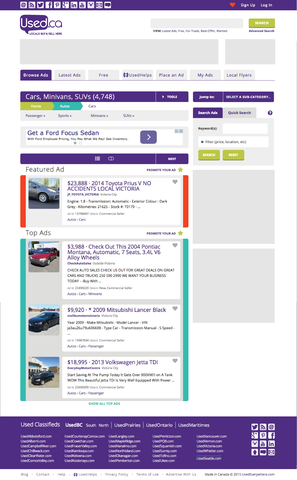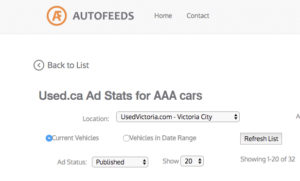Make a New Year’s resolution for your pet

Make a New Year’s resolution for your pet. (Majel & Fry)
New Year’s resolutions are upon us. Instead of thinking about your own destined-to-be-abandoned goals this year, have you thought about making a New Year’s resolution for your pet? The most common New Year’s resolution for humans is probably “to eat better” – and it’s likely the one with the highest failure rate, too. The nice thing about pets is that because you have complete control over their food, it’s a lot easier for them to stick to this resolution. In 2013, resolve to have your pet eat better.
For cats, eating better means weaning them off kibble and onto a healthier diet that is high in meat protein, such as canned food or homemade food. Did you know that cats are true carnivores? Carnivores’ bodies are designed to digest and get nutrients from meat. When a true carnivore eats carbohydrates, such as the corn, rice, vegetables and other plants that kibble is mostly made of, its body and digestive enzymes don’t know what to do with them. The best that true carnivores can do with carbs is turn them into sugar.
Just like in humans, sugar is a useable form of energy for a cat, but would you consider it healthy to live only on donuts, candy and chocolate bars for the rest of your life? Like humans, a cat’s diet that is full of sugar leads to high blood sugar and diabetes, weight gain, obesity, low energy, dull looks, inflammation and irritable bowel syndrome, shortened life spans and more.
When cats eat meat protein instead of plants, they become naturally slimmer because excess protein can be excreted in urine (whereas excess carbohydrates are stored as fat, which is why cats can become fat on kibble, even “light” or “diet” kibble – there’s no such thing as “light” sugar!). On top of maintaining a healthy weight, a cat fed a protein diet has a thick, glossy and dandruff-free coat, doesn’t shed as much, and has fewer hairballs. Their blood sugar is stable and they have enormous amounts of energy with which to run around the house like crazy. And get this: cats that eat meat protein can actually become smarter, because better fuel for the body is better fuel for the brain.
If you’re still not convinced, this is what clinched me: cats poop less when they eat meat instead of kibble, because their bodies can fully absorb meat protein instead of passing it as indigestible waste.
Now that you’re dreaming about a new year with a healthy, vigorous cat by your side and an emptier litterbox, here is some helpful information on what you can feed cats instead of kibble. I got my two cats onto a meat diet for New Year’s 2010, and after seeing how healthy they have become, I would never go back. Their coats are so soft and silky that I lose a lot of time each day rubbing my face in their fur. They have tons of energy with which to tear up and down the stairs and they seriously only poop every 2-3 days. How could I give that up? Switching to a meat diet can be as simple as switching to the right canned cat food, or for the budget-conscious can even involve making homemade cat food.
Helpful information:
The Basics Of Feline Nutrition by Dr. L. Pierson
Protein Diets for Diabetic Cats by Dr. E. Hodgkins
Which Commercial Foods Are Best
Transitioning Kibble Addicts to Meat Diets
Making Homemade Cat Food
Making Homemade Cat Food (Detailed)
Whole Prey Cat Food
The Dangers Of Dry Food
Frozen Raw Cat Food at Pet Valu stores
HOMEMADE CAT FOOD RECIPE
You will need a grinder that can grind bone, vitamin supplements, containers, and meat with bones such as chicken thighs. Adding hearts and livers is ideal, but not mandatory. I bought my grinder at Home Outfitters. I get my supplements from Well.ca and Amazon.com. The freezer containers are from a dollar store. I get chicken hearts, livers and gizzards at Farm Boy or at discount grocery stores such as Food Basics.
This recipe makes about six weeks worth of food for my two cats – I usually double this recipe and make a batch four or five times a year. This raw food recipe costs approximately half the price of a high-quality meat canned food such as Innova EVO, so the startup costs for my grinder, supplements and containers were paid off within the first six months. I will also save on vet bills with healthier cats.
Ingredients
- 5 kg raw meat with bones (thighs or drumsticks from chicken or turkeys, or whole carcasses totaling 5 kg from small animals such as rabbit, duck, game hens, etc.)
- 1 kg raw hearts (from the same animal as the meat and bones if possible. If raw heart is not available, substitute with 10 000 mg taurine and 1 kg muscle meat)
- 0.5 kg raw liver (if raw liver is not available, substitute with 100 000 IU Vitamin A, 4000 IU Vitamin D, and 0.5 kg muscle meat)
- 5+ cups water (as watery as your cat will enjoy it)
- 10 raw egg yolks (you can add the whites too but only if they are at least partially cooked)
- 15 000 mg taurine
- 15 000 mg salmon oil
- 2000 IU vitamin E (the powdered version is easiest)
- 500 mg vitamin B complex
- 5 tsp iodized salt (this is for the iodine, so do NOT omit)
- Optional: 1 kg gizzards (this is a chewy meat that is great for cleaning your cat’s teeth and exercising its jaw. If gizzards are not available, decrease the number of bones you are adding by 20%.)
- Optional: Optional: 2 large cans pumpkin OR 10 tsp psyllium husks (this helps prevent constipation that may come from switching to a new diet)
Directions
1. Rinse the meat under the tap while pulling the skin from the meat. Save the skin in a bowl for the grinder and put in the fridge.
2. This step is optional. With a sharp knife, cut off bite-sized chunks of meat from the bone. Chewing on chunks of meat exercises a cat’s jaw muscles, makes them eat more slowly, and helps clean their teeth. Place the bones in a bowl for the grinder. Save the chunked meat in a bowl and put it in the fridge, do not grind it. If you do not have time to cut chunks of meat, proceed to step 3.
3. Grind the liver, the heart, the skin, the bones, and the cooked egg whites. Once ground, stir this mixture well.
4. In a bowl, whisk together the water and all the remaining non-meat ingredients. If you had to replace liver with Vitamin A and D or replace heart with taurine, add those substitutes now. If you are using psyllium, add it at the end and mix well.
5. Mix everything together in a large bowl: the “vitamin slurry” that you just made, the ground up meat/bones/organs, and the chunks of meat that you cut up by hand. Portion into containers and freeze. Serve thawed but raw.
6. Clean your work area with a mixture of 1 tbsp bleach and 1.5 cups water in a spray bottle.






 Work smart. Not hard.
Work smart. Not hard.





